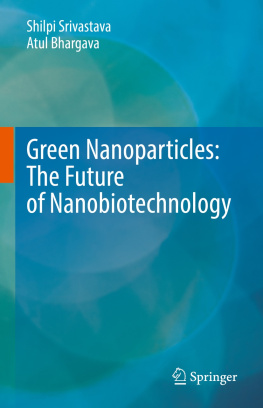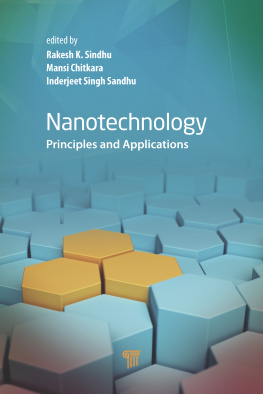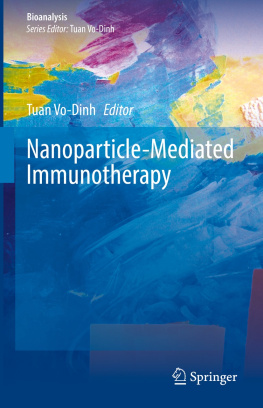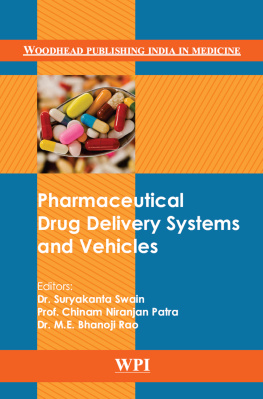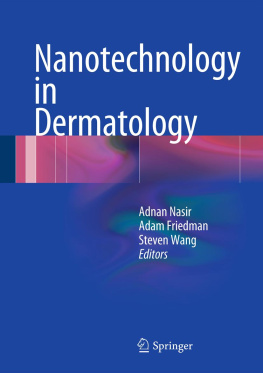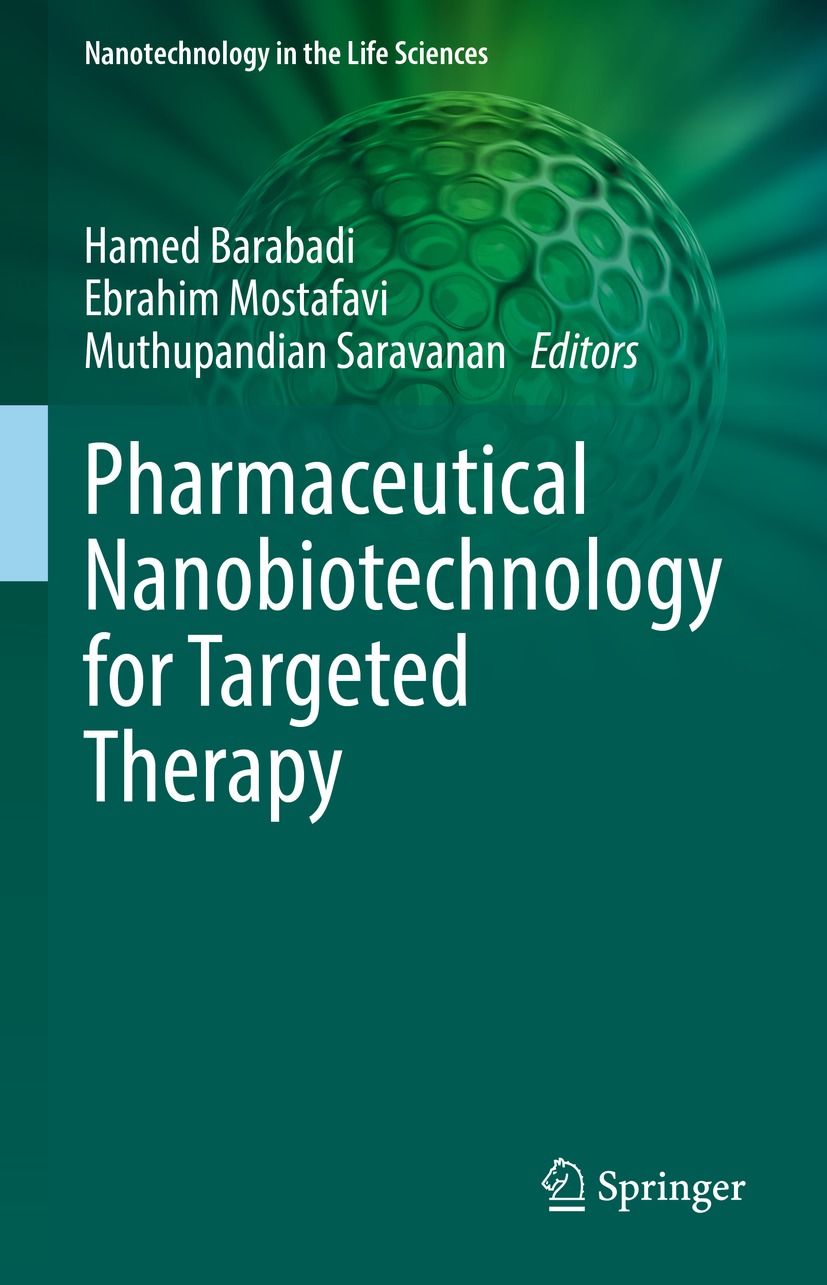Nanotechnology in the Life Sciences
Series Editor
Ram Prasad
Department of Botany, Mahatma Gandhi Central University, Motihari, Bihar, India
Nano and biotechnology are two of the 21st centurys most promising technologies. Nanotechnology is demarcated as the design, development, and application of materials and devices whose least functional make up is on a nanometer scale (1 to 100 nm). Meanwhile, biotechnology deals with metabolic and other physiological developments of biological subjects including microorganisms. These microbial processes have opened up new opportunities to explore novel applications, for example, the biosynthesis of metal nanomaterials, with the implication that these two technologies (i.e., thus nanobiotechnology) can play a vital role in developing and executing many valuable tools in the study of life. Nanotechnology is very diverse, ranging from extensions of conventional device physics to completely new approaches based upon molecular self-assembly, from developing new materials with dimensions on the nanoscale, to investigating whether we can directly control matters on/in the atomic scale level. This idea entails its application to diverse fields of science such as plant biology, organic chemistry, agriculture, the food industry, and more.
Nanobiotechnology offers a wide range of uses in medicine, agriculture, and the environment. Many diseases that do not have cures today may be cured by nanotechnology in the future. Use of nanotechnology in medical therapeutics needs adequate evaluation of its risk and safety factors. Scientists who are against the use of nanotechnology also agree that advancement in nanotechnology should continue because this field promises great benefits, but testing should be carried out to ensure its safety in people. It is possible that nanomedicine in the future will play a crucial role in the treatment of human and plant diseases, and also in the enhancement of normal human physiology and plant systems, respectively. If everything proceeds as expected, nanobiotechnology will, one day, become an inevitable part of our everyday life and will help save many lives.
Editors
Hamed Barabadi , Ebrahim Mostafavi and Muthupandian Saravanan
Pharmaceutical Nanobiotechnology for Targeted Therapy

The Springer logo.
Editors
Hamed Barabadi
Department of Pharmaceutical Biotechnology, School of Pharmacy, Shahid Beheshti University of Medical Science, Tehran, Iran
Ebrahim Mostafavi
Stanford Cardiovascular Institute & Department of Medicine, Stanford University School of Medicine, Stanford, CA, USA
Muthupandian Saravanan
AMR and Nanotherapeutics Laboratory, Department of Pharmacology, Saveetha Dental College, Saveetha Institute of Medical and Technical Sciences (SIMATS), Chennai, India
ISSN 2523-8027 e-ISSN 2523-8035
Nanotechnology in the Life Sciences
ISBN 978-3-031-12657-4 e-ISBN 978-3-031-12658-1
https://doi.org/10.1007/978-3-031-12658-1
The Editor(s) (if applicable) and The Author(s), under exclusive license to Springer Nature Switzerland AG 2022
This work is subject to copyright. All rights are solely and exclusively licensed by the Publisher, whether the whole or part of the material is concerned, specifically the rights of translation, reprinting, reuse of illustrations, recitation, broadcasting, reproduction on microfilms or in any other physical way, and transmission or information storage and retrieval, electronic adaptation, computer software, or by similar or dissimilar methodology now known or hereafter developed.
The use of general descriptive names, registered names, trademarks, service marks, etc. in this publication does not imply, even in the absence of a specific statement, that such names are exempt from the relevant protective laws and regulations and therefore free for general use.
The publisher, the authors, and the editors are safe to assume that the advice and information in this book are believed to be true and accurate at the date of publication. Neither the publisher nor the authors or the editors give a warranty, expressed or implied, with respect to the material contained herein or for any errors or omissions that may have been made. The publisher remains neutral with regard to jurisdictional claims in published maps and institutional affiliations.
This Springer imprint is published by the registered company Springer Nature Switzerland AG
The registered company address is: Gewerbestrasse 11, 6330 Cham, Switzerland
Preface
The field of nanotechnology for targeted therapy initiated more than a decade ago has grown fast, and interest in it is increasing. Given the importance of the field for targeted drug and gene delivery systems, there are a large number of laboratory investigations today researching nanobiomaterials for diagnostic and therapeutic applications. Because of the ability of scientists to load nanoparticles with any agent, interest continues to grow, and technology in this arena is rapidly evolving. These emerging nanobiomaterials-based medicines can overcome the disadvantages of traditional medicines by target-oriented and site-specific delivery of precise medicines (immunotherapeutic agents, chemotherapeutic agents, diagnostic agents, and so on).
Pharmaceutical Nanobiotechnology for Targeted Therapy presents an updated overview of recent advancements in the field of pharmaceutical nanobiotechnology and nano-based drug and gene delivery systems. This comprehensive knowledge will allow researchers to discover innovative nanobiomaterials for targeted therapeutics. The chapters deal with various emerging nanobiomaterials for targeted therapeutic delivery systems and the writing is in a style that is easily disseminated and in a manner that can be readily adopted as sources for new and further studies.
This book should be useful for researchers and professionals from academia and industry working in the field of nanotechnology and nanobiotechnology, as well as in the field of pharmaceutical nanotechnology. It should also be useful to those interested in a range of disciplines from material science, chemistry, molecular biology, polymer chemistry, and many more interdisciplinary areas.
Hamed Barabadi
Ebrahim Mostafavi
Muthupandian Saravanan
Tehran, Iran Stanford, CA, USA Chennai, India
Contents
Amal A. Al-Dossary , Adaugo C. Isichei , Songqi Zhang , Jiahe Li , Abdelhamid Errachid and Abdelhamid Elaissari
Eden Mariam Jacob , Ankita Borah and D. Sakthi Kumar
Dimitrios Selianitis , Martha Kafetzi , Natassa Pippa , Stergios Pispas and Maria Gazouli
Rahul Tiwari , Arvind Gulbake , Pramod Kumar , Anamika Sahu Gulbake , Rupa Gupta , Dheeraj Bisht and Neeraj Kumar Sethiya
Maria Tsakiri , Nikolaos Naziris , Vasiliki Mahairaki and Costas Demetzos
Eder Lilia Romero and Maria Jose Morilla
Hamed Morad , Kamyar Jounaki , Mojtaba Ansari , Salar Sadeghian-Abadi , Hossein Vahidi and Hamed Barabadi
Ranjit De , Manoj Kumar Mahata , Yo Han Song and Kyong-Tai Kim
Mansab Ali Saleemi and Vuanghao Lim



